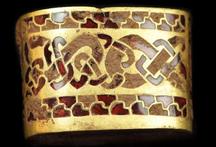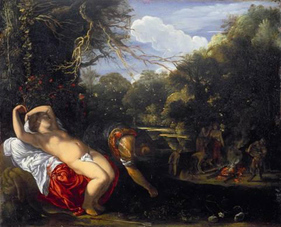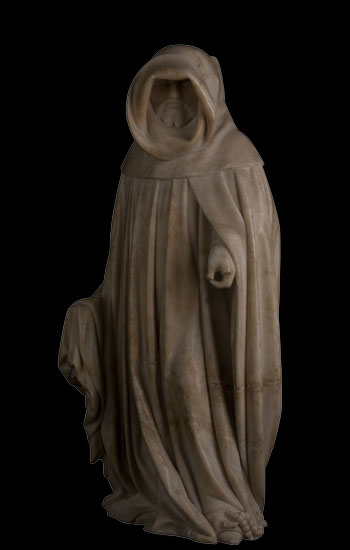Just a quick note to update a previous post: The Staffordshire Hoard has been “saved” for the British nation, rather than going into private hands, by a government grant.
 As I described the situation here, a private citizen found the trove of more than 1,500 gold and silver artifacts, from the 7th Century, last summer, and he and the landowner will split the money. A valuation committee set the price at £3.285 million, and both public and private sector money has been coming into the fund. On Wednesday, the National Heritage Memorial Fund contributed £1,285,000, completing the fundraising effort, and allowing the treasures to stay in the north of England.
As I described the situation here, a private citizen found the trove of more than 1,500 gold and silver artifacts, from the 7th Century, last summer, and he and the landowner will split the money. A valuation committee set the price at £3.285 million, and both public and private sector money has been coming into the fund. On Wednesday, the National Heritage Memorial Fund contributed £1,285,000, completing the fundraising effort, and allowing the treasures to stay in the north of England.
Private funds were coming in, but apparently mostly in small amounts.
The Independent has a good article on the whole situation, with a slide show of artifact, here. And the BBC has a video here.

 A big raspberry goes today to one Henry Aubin, who — writing in the Montreal Gazette — wrote this:
A big raspberry goes today to one Henry Aubin, who — writing in the Montreal Gazette — wrote this: Here’s one: Raphael’s La Velata has just finished its 10-week run at the
Here’s one: Raphael’s La Velata has just finished its 10-week run at the 

 The Mourners also happen to have a
The Mourners also happen to have a  There has been widespread speculation about rising museum attendance, for example — with me being one of the skeptics. AAMD says that 45% of respondents said attendance rose last year, 29% said it declined, and 22% said there was no change (4% of the respondents were closed). (NB: AAMD president Michael Conforti cited these numbers for 2009 in the
There has been widespread speculation about rising museum attendance, for example — with me being one of the skeptics. AAMD says that 45% of respondents said attendance rose last year, 29% said it declined, and 22% said there was no change (4% of the respondents were closed). (NB: AAMD president Michael Conforti cited these numbers for 2009 in the